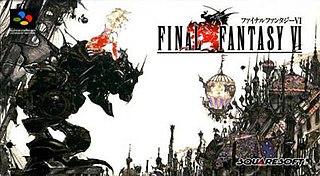
Final Fantasy VI, also known as Final Fantasy III from its initial North American release, is a 1994 role-playing video game developed and published by Square for the Super Nintendo Entertainment System. It is the sixth main entry in the Final Fantasy series, the final to feature 2D sprite based graphics, and the first to be directed by someone other than series creator Hironobu Sakaguchi; the role was instead filled by Yoshinori Kitase and Hiroyuki Ito. Long-time collaborator Yoshitaka Amano returned as character designer and concept artist, while composer Nobuo Uematsu returned to compose the game's score, which has been released on several soundtrack albums.

Final Fantasy V is a fantasy role-playing video game developed and published by Square in 1992. It is the fifth main installment of the Final Fantasy series. The game first appeared only in Japan on Nintendo's Super Famicom. It has been ported with minor differences to Sony's PlayStation and Nintendo's Game Boy Advance. An original video animation produced in 1994 called Final Fantasy: Legend of the Crystals serves as a sequel to the events depicted in the game. It was released for the PlayStation Network on April 6, 2011, in Japan. An enhanced port of the game, with new high-resolution graphics and a touch-based interface, was released for iPhone and iPad on March 28, 2013, for Android on September 25 the same year and for Windows on September 24, 2015. A more enhanced re-release of the game as part of the Final Fantasy Pixel Remaster series, was released on November 10, 2021 for Android, iOS, and Windows, and for Nintendo Switch and PlayStation 4 on April 19, 2023.
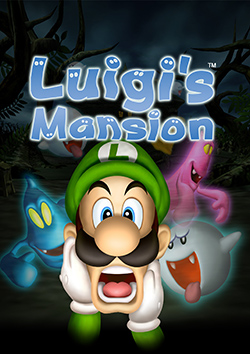
Luigi's Mansion is a 2001 action-adventure game developed and published by Nintendo. The game was a launch title for the GameCube and was the first game in the Mario franchise to be released for the console; it was released in Japan on September 14, 2001, in North America on November 18, 2001, in Europe on May 3, 2002, and in Australia on May 17, 2002. It is the third video game in which Luigi is the main character instead of Mario, after Mario Is Missing! and Luigi's Hammer Toss. Players control him as he explores a haunted mansion, searches for Mario and deals with ghosts by capturing them through a vacuum cleaner supplied by Professor E. Gadd.

Chocobo Racing is a racing game developed and published by Square. for the PlayStation, A spin-off of the Final Fantasy series and part of the Chocobo spin-off series. It was released in Japan in March 1999, followed by North America and Europe in August and October, respectively. The game's star and namesake is the Chocobo, with other figures from the Final Fantasy series, such as Mog the Moogle, the Black Mage, and Cid being part of the cast. Most of the game's soundtrack is composed using songs from previous Final Fantasy titles. As a formulaic kart racer, Chocobo Racing is often compared to Mario Kart and Crash Team Racing.

The Legend of Zelda: Ocarina of Time is a 1998 action-adventure game developed and published by Nintendo for the Nintendo 64. It was released in Japan and North America in November 1998 and in PAL regions the following month. Ocarina of Time is the first game in The Legend of Zelda series with 3D graphics.
Dragon Quest, previously published as Dragon Warrior in North America until 2005, is a series of role-playing games created by Japanese game designers Armor Project, Bird Studio and Sugiyama Kobo to its publisher Enix, with all of the involved parties co-owning the copyright of the series since then. The games are published by Square Enix since its inception, with localized remakes and ports of later installments for the Nintendo DS, Nintendo 3DS, and Nintendo Switch being published by Nintendo outside of Japan. With its first game published in 1986, there are eleven main-series games, along with numerous spin-off games. In addition, there have been numerous manga, anime and novels published under the franchise, with nearly every game in the main series having a related adaptation.
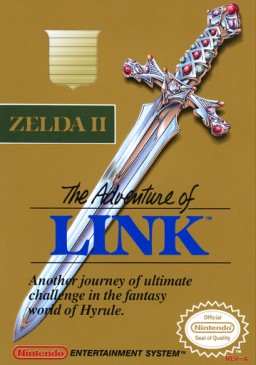
Zelda II: The Adventure of Link is an action role-playing game developed and published by Nintendo. It is the second installment in the Legend of Zelda series and was released in Japan for the Famicom Disk System on January 14, 1987—less than one year after the Japanese release and seven months before the North American release of the original The Legend of Zelda. Zelda II was released in North America and the PAL region for the Nintendo Entertainment System in late 1988, almost two years after its initial release in Japan.

Dragon Quest IV: Chapters of the Chosen, titled Dragon Warrior IV when initially localized to North America, is a role-playing video game, the fourth installment of the Dragon Quest video game series developed by Chunsoft and published by Enix, and the first of the Zenithian Trilogy. It was originally released for the Famicom on 11 February 1990 in Japan. A North American NES version followed in October 1992, and would be the last Dragon Quest game localized and published by Enix's Enix America Corporation subsidiary prior to its closure in November 1995, as well as the last Dragon Quest game to be localized into English prior to the localization of Dragon Warrior Monsters in December 1999. The game was remade by Heartbeat for the PlayStation, which eventually was available as an Ultimate Hits game. The remake was ported by ArtePiazza to the Nintendo DS, released in Japan November 2007 and worldwide in September 2008. A mobile version based on the Nintendo DS remake was released in 2014 for Android and iOS.

Dragon Quest VIII: Journey of the Cursed King is a role-playing video game developed by Level-5 and published by Square Enix for the PlayStation 2. It was released in Japan in 2004, in North America in 2005 and PAL regions in 2006, making it the first main series installment released in the PAL region. It is the eighth installment of the Dragon Quest series and it is the first English version of a Dragon Quest game to drop the Dragon Warrior title. A version of the game for Android and iOS was released in Japan in December 2013, and worldwide in May 2014.
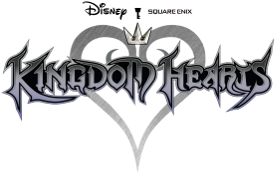
Kingdom Hearts is a series of action role-playing games created by Japanese game designers Tetsuya Nomura and Shinji Hashimoto, being developed and published by Square Enix. It is a collaboration between Square Enix and The Walt Disney Company, and is under the leadership of Nomura, a longtime Square Enix employee.
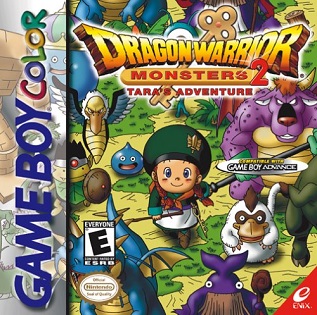
Dragon Warrior Monsters 2, known in Japan as Dragon Quest Monsters 2, is a role-playing video game published by Enix for the Game Boy Color. It is the second Dragon Warrior Monsters game for the Game Boy Color and features two different versions of the same game, Cobi's Journey and Tara's Adventure. Both games were remade in 2002 for the PlayStation in a compilation game called Dragon Quest Monsters 1+2 and released only in Japan. The Nintendo 3DS version combined both games into one and was released only in Japan in 2014 with the title Dragon Quest Monsters 2: Iru and Luca's Marvelous Mysterious Key. The 3DS version was later brought to iOS, Android on August 6, 2020, in Japan.

Epic Mickey: Power of Illusion is a 2012 platform game developed by DreamRift and published by Disney Interactive Studios for the Nintendo 3DS. It is a third part of the Epic Mickey series, released alongside Epic Mickey 2: The Power of Two, and is touted as a tribute to Sega's Illusion series of Mickey Mouse games, particularly Castle of Illusion Starring Mickey Mouse.

Adventure Time: Hey Ice King! Why'd You Steal Our Garbage?!! is a 2012 action-adventure game developed by WayForward Technologies and published by D3 Publisher for the Nintendo DS and Nintendo 3DS. It is based on the animated television series Adventure Time.

The Legend of Zelda: A Link Between Worlds is a 2013 action-adventure game developed and published by Nintendo for the Nintendo 3DS. The game is the 17th in The Legend of Zelda series and is a sequel to the 1991 title The Legend of Zelda: A Link to the Past. Announced in April 2013, A Link Between Worlds was released in Australia, Europe, and North America in November, and in Japan a month later.

Bravely Second: End Layer is a role-playing video game developed by Silicon Studio for the Nintendo 3DS handheld console and is the direct sequel to Bravely Default. It was published by Square Enix in Japan on April 23, 2015, and by Nintendo in North America, Europe, and Australia in 2016.

Final Fantasy Explorers is an action role-playing video game for the Nintendo 3DS. It features character job-oriented combat against classic Final Fantasy monsters and summons. It was released in Japan in December 2014, and in North America and Europe in January 2016.

Etrian Odyssey is a dungeon crawler role-playing video game series. It is primarily developed and published by Atlus and currently owned by Sega. By 2016, the series had sold a combined total of 1.5 million copies worldwide.

Bravely Default II is a role-playing video game developed by Claytechworks and published by Square Enix. It was released worldwide for the Nintendo Switch on February 26, 2021, with Nintendo publishing the game on the platform outside of Japan, and was released for Windows on September 2, 2021. It is the third main installment in the Bravely series, following the original Bravely Default and its direct sequel Bravely Second: End Layer. It features a separate story, setting, and cast of characters.
Final Fantasy Crystal Chronicles is a series of video games within the Final Fantasy franchise developed by Square Enix. Beginning in 2003 with the game for the GameCube, the series has predominantly been released on Nintendo gaming hardware and covers multiple genres, including action role-playing. The Crystal Chronicles series takes place in an unnamed world inhabited by four tribes. Recurring themes include creating objects from memory and the importance of family. The gameplay, which has always been aimed at as wide an audience as possible within a genre, generally involves either multiple players or a large group working together.

















